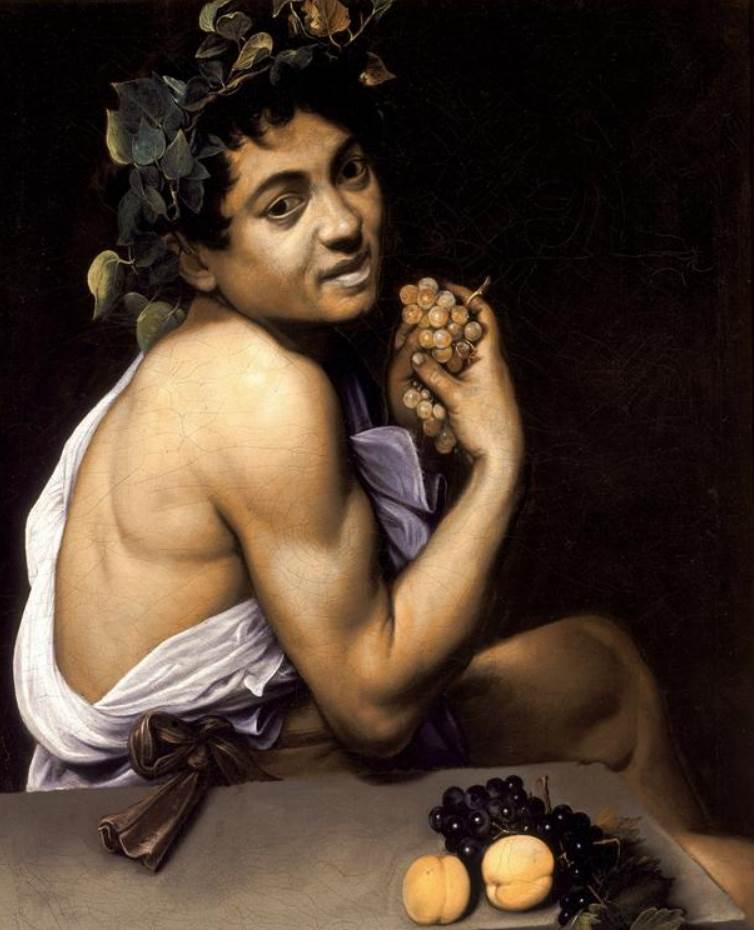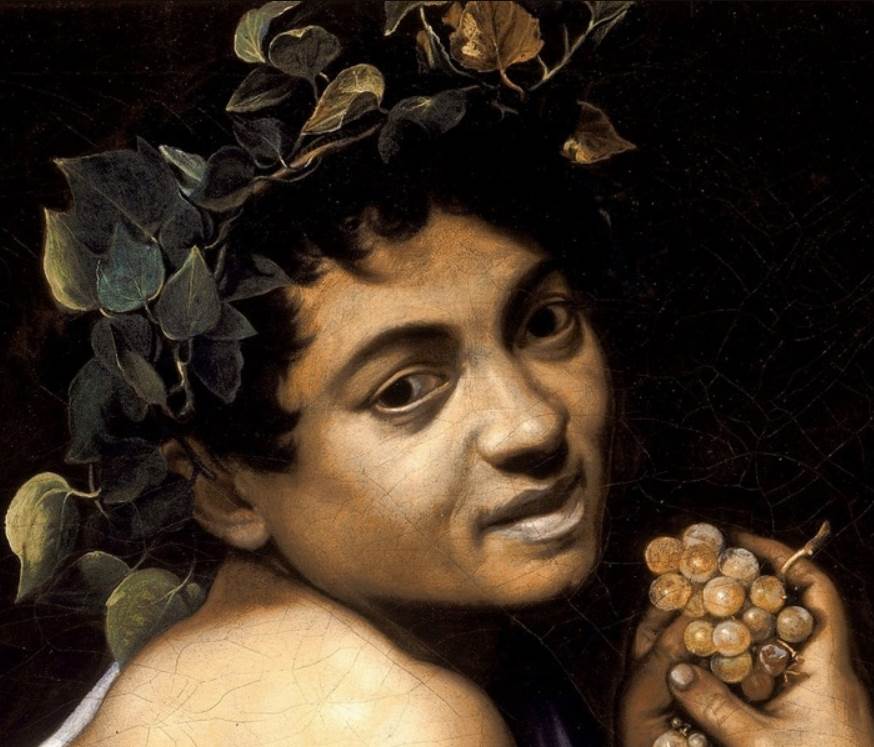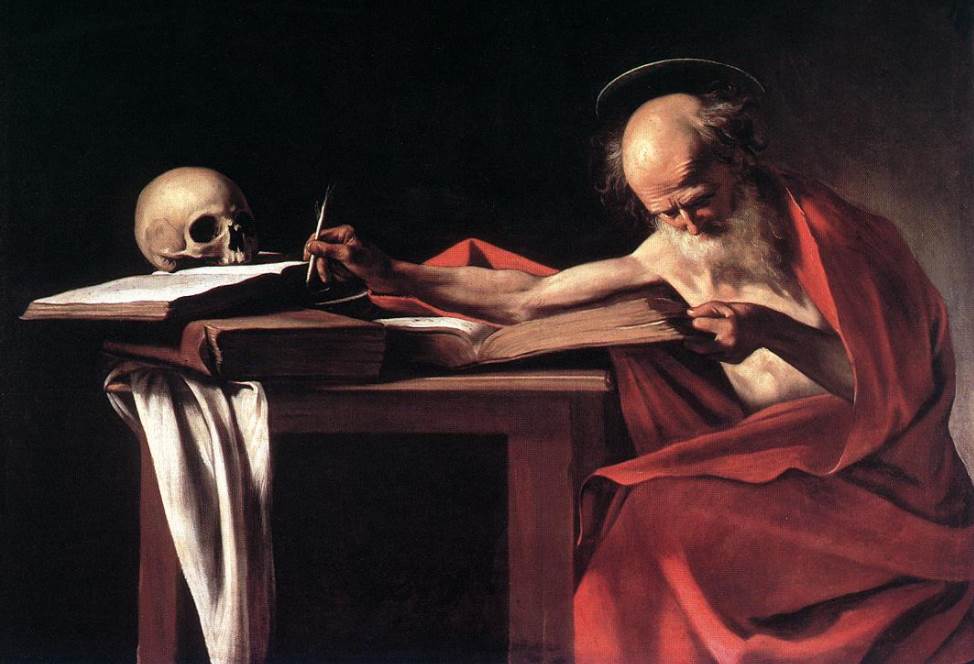The turbulent life of Caravaggio (1571-1610) took a dramatic turn when he had to flee his native Milan for Rome in the early 1590s. One brawl too many supposedly caused serious harm to a police officer, even though this story has never been confirmed.
Either way, he was so talented that his distinctive paintings inspired countless artists in the decades and centuries following his mysterious demise. Let’s take a closer look at “Young Sick Bacchus,” a work created at a time when he wasn’t the renowned artist he ended up becoming just yet.
1. It was painted shortly after he arrived in Rome
Little is known about the reason why Michelangelo Merisi da Caravaggio fled his native city of Milan. He was a known brawler and somehow always seemed to get himself into trouble.
The only thing that we know is that he arrived in Rome in extremely bad condition in the year 1592. He quickly found shelter with his initial master called Simone Peterzano, a Mannerist artist who himself was a pupil of Titian in Venice.
Caravaggio eventually became the pupîl of Giuseppe Cesari, another Mannerist artist who worked for Pope Clement VIII. It was during this initial period that he painted Young Sick Bacchus around 1593-1594.

2. It’s a self-portrait painted at a time that the artist was seriously ill
Because Caravaggio wasn’t an established artist yet at the time, little is known about the circumstances in which he became ill and how serious his condition was. Some unverified contemporary sources claim that he was hospitalized for up to 6 months.
What we do know is that Young Sick Bacchus is a self-portrait by Caravaggio which he painted during the time he was seriously ill. It was probably intended to demonstrate the artist’s talent for painting still-lifes and portraits.
3. The artist’s skin and eyes might reveal his condition
The title of the painting already hints at the fact that Caravaggio was sick at the time, but the striking appearance and realistically depicted condition might also provide a clue as to what condition he was suffering from.
His jaundiced skin and the yellow eyes of the young man in the painting hint towards some sort of liver disease. Whatever condition he had, it most definitely produced an excess amount of bilirubin resulting in his yellowish skin and eyes.
Research conducted by medical experts in the year 2009 indicated that the artist might have suffered from “Addison’s Disease,” a condition that causes adrenal insufficiency.

4. It briefly remained in the collection of Caravaggio’s mentor in Rome
Because the self-portrait was created at a time when the artist was still happening his skills, it’s one of the multiple self-portraits and still-lifes that he created using a mirror.
Other examples include “Boy Peeling Fruit” and “Boy with a Basket of Fruit,” both created around the same time as Young Sick Bacchus. All these remained in the collection of Giuseppe Cesari for well over a decade.
5. The painting is on public display in a famous museum in Rome
Cesari went on to live until his early 70s and only passed away in the year 1640 which is 30 years after Caravaggio himself passed away at the young age of 38.
He didn’t manage to keep his paintings, though, because there was a greedy Cardinal named Scipione Borghese (1577-1633) on the loose in Rome in the early 17th century. By the year 1607, Caravaggio was already a troubled superstar which increased the value of his early works tremendously.
Borghese was an avid art collector and seized countless works of art all across Europe, including the ones owned by Cesari. Young Sick Bacchus entered the collection of Scipione Borghese in 1607 and is still on public display at the Galleria Borghese in Rome today.

More interesting facts about Young Sick Bacchus by Caravaggio
6. During his initial period in Rome, Caravaggio was still far from the popular artist he was to become. This reflects in the works he created which focused on portraits and still-lifes featuring himself accompanied by fruit.
That’s why the initial description of this work was a “cabinet piece” which is usually very small. This painting has dimensions of just 67 × 53 centimeters (26 × 21 inches).
7. Caravaggio was being trained by Mannerist artists, a period in which artists exaggerated the harmonious ideals of the Renaissance, it’s already clear that he was about to depart from his masters.
He was at the crossroads between Manners and Baroque, something emphasized by the dramatic expression on the face of the young artist. Later on, he enhanced this dramatic effect using chiaroscuro, a style that turned him into one of the most influential Baroque artists in history.
8. Just like the depicted young man himself, the fruits in this painting don’t appear to be in mint condition. This is a sheer contrast to a painting he most probably painted after Young Sick Bacchus called “Boy with a Basket of Fruit” (1593).
The amazing realism depicted by the artist didn’t leave out any imperfections, although the fruits in the latter painting appear to be in much better shape. This is believed to be a metaphor for the artist’s recovery from the serious illness he suffered from.

9. Although it initially doesn’t appear to be as such, it’s believed that Caravaggio used this remarkable work of art to advertise his services in Rome.
The artist struggled for several years to earn commissions but this all changed in the late 16th century when he became one of the most sought-after painters in Rome.
10. Apart from some of these early portraits and still-lifes, the Galleria Borghese in Rome also has some later works by Caravaggio on display. Some of these include “Madonna, Child, and Serpent” (1605-1606), “Saint Jerome Writing” (1606), and “St John the Baptist” (1610).
These were painted during the final dark years of this troubled artist’s life, shortly before he mysteriously passed away while traveling from Naples to Rome.



